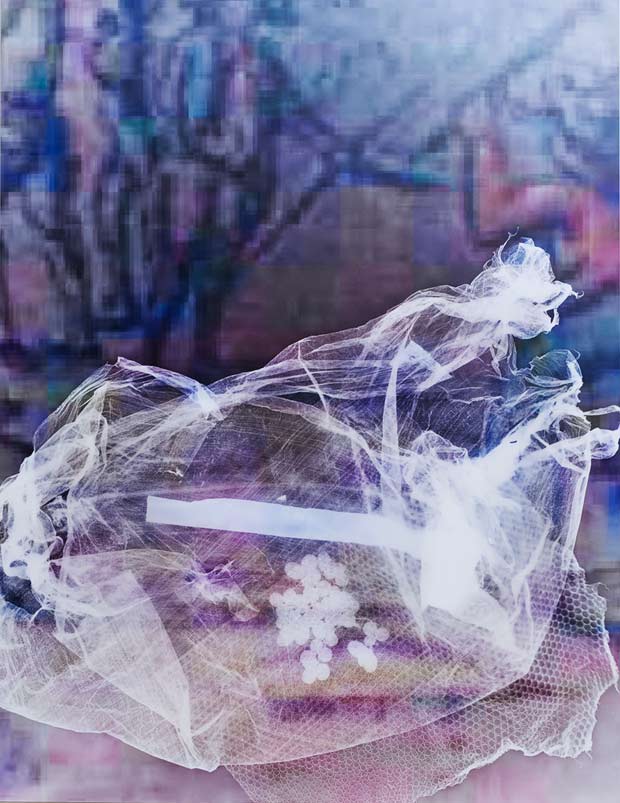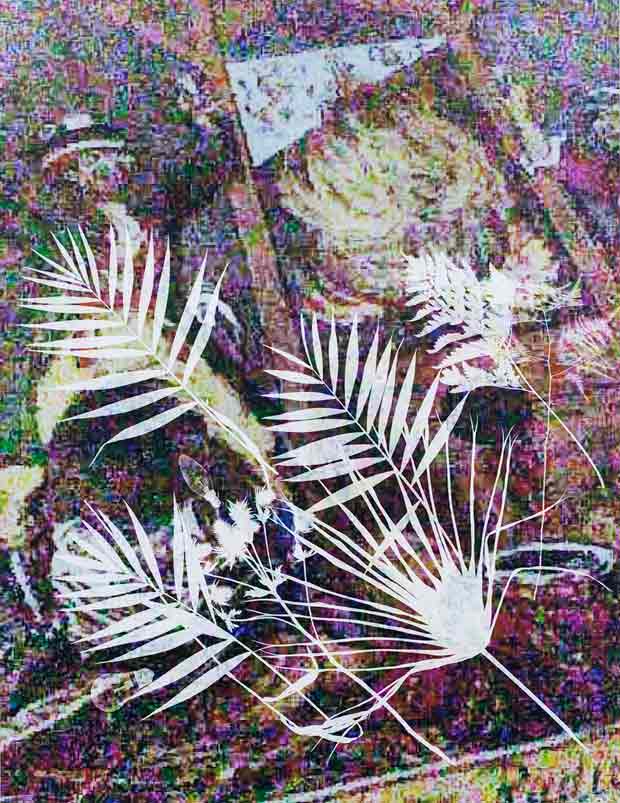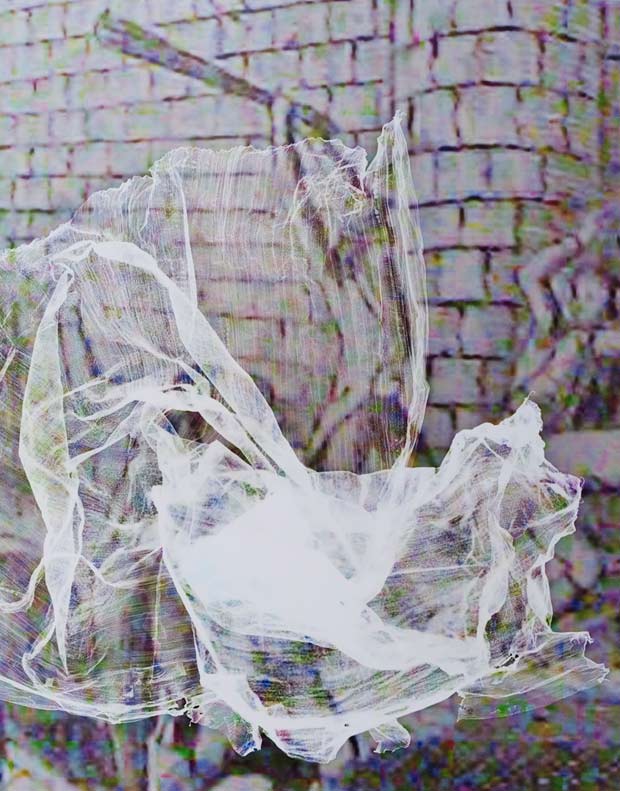Mark Soo
Fusing photograms and cell phone snaps in an exhibition exploring the evolution of photography

In his current exhibition, “Neither Camera Nor Companion” at Blanket Gallery in Vancouver, Berlin-based artist Mark Soo has created a series of photographs which thoughtfully and cleverly take the viewer on a journey through photographic history. By drawing on his fascination with how culture and technology have continuously influenced photography, Soo manages to combine magnified digital noise, darkroom processing, and crisp photogram silhouettes with striking results.
Your recent photos are so visually complex it’s challenging to understand what’s going on. Can you explain how they’re made?
Very broadly, my work often begins by looking at the relationship between culture, technology and the ways they have influenced each other. So this series of works, originally titled “Madame Guillotine“, started with wanting to find a different way to juxtapose digital and analog photography in a way that blends both, rather than keeps them separate.
What I did was to make a photograph that literally fuses a technique dating from the earliest days of photography, the photogram, with something emblematic of the direction of photography today, which are digital photos taken with a cellphone. In the end, all these things ended up coming together in a traditional analog darkroom.
I started by taking a bunch of digital images of prints of the French Revolution with my low-res cellphone, and transferred them to a negative. I then took the negatives into the darkroom and printed them as traditional color photographs. In the printing process, I placed various objects on the photographic paper in order to produce a photogram on top of the printed image. In some sense you could say these works function as a condensed history of photographic technique. Partly what I liked was how the detailed organic shapes of the photograms contrasted with the grid of digital pixels in a way that I hadn’t experienced before.


You used images of the French Revolution as the foundation for these pictures. Why was that your starting point?
I traveled to France a few times over the last year and while there, I got interested in the guillotine and its history—gruesome stuff for sure, but definitely fascinating. I ended up taking photos with my phone of anything related to the guillotine, without thinking much about what exactly I was doing. So they were snaps of images in books mostly—pictures of pictures. Anyhow, I started to think about the guillotine blade, and how it resembled the shutter of a camera; this got me thinking about photography in relation to the French Revolution.
Then I started to see parallels between what was occurring on a political level during the French Revolution, with this tremendous shift in photography happening today—the digital revolution: in both instances people are moving from the perceived traditions and hierarchies of the old world toward something they feel is more democratic. As traditional photolabs are closing, places like Flickr and Instagram, or Google Images, are becoming more indispensable to how we consider image-making in general. I thought it was particularly interesting, on an abstract level at least, to draw comparisons between these two points in history.
“Neither Camera Nor Companion” is showing at Vancouver’s Blanket Gallery through 21 April 2012.










